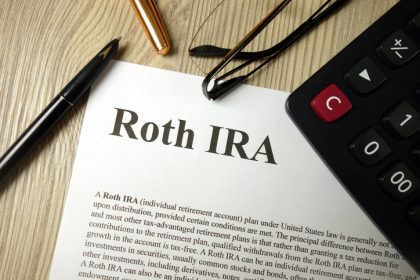Social Security is a key source of income for millions of retirees. And knowing what the average Social Security check looks like at age 66 can help you plan more effectively. For those born before 1960, their full retirement age (FRA) is between 66 and 67. While those born after 1960 have an FRA of 67. A financial advisor can help you explore different claiming scenarios and build a retirement income strategy tailored to your needs.
How to Determine Your Full Retirement Age
Before deciding when to claim Social Security, it’s essential to know your full retirement age (FRA). This is the age at which you’re eligible to receive 100% of your benefit. Your FRA depends on your year of birth:
- If you were born between 1943 and 1954, your full retirement age is 66.
- If you were born between 1955 and 1959, your FRA ranges from 66 and 2 months to 66 and 10 months.
- If you were born in 1960 or later, your FRA is 67.
If your full retirement age is 67, claiming early at 66 reduces your benefit1 by approximately 6.7%. In other words, you’d receive around 93.3% of your full benefit amount. For many, this smaller reduction feels manageable. It provides steady income but avoids the larger reductions tied to claiming at an earlier age.
As with any retirement decision, it’s important to consider your full financial picture. This includes life expectancy, overall health, and whether you plan to continue working.
To help you estimate your personal benefit, the Social Security Administration provides month-by-month reduction charts2.
Here’s a breakdown of the full retirement benefits you’d receive throughout age 66:
| Age | Percentage of Full Retirement Benefits Received |
| 66 | 93.3% |
| 66 and 1 month | 93.9% |
| 66 and 2 months | 94.4% |
| 66 and 3 months | 95.0% |
| 66 and 4 months | 95.6% |
| 66 and 5 months | 96.1% |
| 66 and 6 months | 96.7% |
| 66 and 7 months | 97.2% |
| 66 and 8 months | 97.8% |
| 66 and 9 months | 98.3% |
| 66 and 10 months | 98.9% |
| 66 and 11 months | 99.4% |
The Average Social Security Benefit at Age 66
Now, let’s consider what the average Social Security benefit might look like. Unfortunately, the Social Security Administration doesn’t provide a specific average for 66-year-old retirees. However, we can estimate it based on the most recent data.
According to the 2025 Annual Statistical Supplement3, as of December 2024, the average monthly benefit for a 66-year-old retired worker was $2,127.06. This pertains to workers who were unaffected by an early retirement reduction or any delayed retirement credit.
To project the 2025 figure, we can apply the most recent cost-of-living adjustment (COLA)4 of 2.5%, which raises the estimate to approximately $2,180.24.
If someone with average lifetime earnings claims Social Security at 66, they might expect a monthly benefit of approximately $2,180.24.
Claiming Social Security at 66 – Considerations

For many retirees, age 66 represents a practical compromise between early and full retirement. The smaller reduction in monthly benefits compared to claiming at 62 or 63 allows you to start collecting earlier while still retaining most of your full benefit amount.
However, timing is a personal decision and depends on several factors:
- Health and life expectancy: If you expect to live a longer life, waiting until full retirement age, or even beyond, can result in greater lifetime income.
- Income needs: If you’ve retired or are cutting back on work, Social Security can help fill the gap in your budget.
- Work status: If you plan to continue working, your earnings may affect your benefit before FRA due to income limits.
- Spousal considerations: Your decision could impact your spouse’s benefits, especially if they’ll be claiming a spousal or survivor benefit based on your record.
If you’re unsure whether 66 is the right time to claim, running different scenarios through our retirement calculator or speaking with a financial advisor can help you weigh the pros and cons.
Frequently Asked Questions (FAQs)
Can I Work and Collect Social Security at Age 66?
Yes, but if your full retirement age is 67, you’re still subject to the SSA’s earnings limit. For 2025, if you earn more than $23,400, $1 is withheld from your benefit for every $2 you earn over that limit. Once you reach your FRA, there’s no reduction based on income.
Will My Benefits Automatically Increase When I Reach Full Retirement Age?
No. If you claim at 66 and your FRA is 67, your benefit remains reduced even after you reach 67. The only increases you’ll receive are annual cost-of-living adjustments.
Is 66 Considered Full Retirement Age?
It depends on your birth year. For those born between 1943 and 1954, yes, age 66 is the full retirement age. If you were born after 1954, your FRA is slightly later, increasing gradually up to age 67 for those born in 1960 or later.
Bottom Line

Claiming Social Security at age 66 offers a modest reduction from full benefits, making it a compelling option for those who want to retire soon but still preserve the majority of their income. While it’s not the full amount available at FRA or age 70, it can strike a good balance depending on your health, finances, and goals.
Retirement Planning Tips
- A financial advisor can recommend strategies to help grow your nest egg. Finding a financial advisor doesn’t have to be hard. SmartAsset’s free tool matches you with vetted financial advisors who serve your area, and you can have a free introductory call with your advisor matches to decide which one you feel is right for you. If you’re ready to find an advisor who can help you achieve your financial goals, get started now.
- Mandatory distributions from a tax-deferred retirement account can complicate your post-retirement tax planning. Use SmartAsset’s RMD calculator to see how much your required minimum distributions will be.
Photo credit: ©iStock.com/LaylaBird, ©iStock.com/Inside Creative House, ©iStock.com/RealPeopleGroup
Read the full article here
















